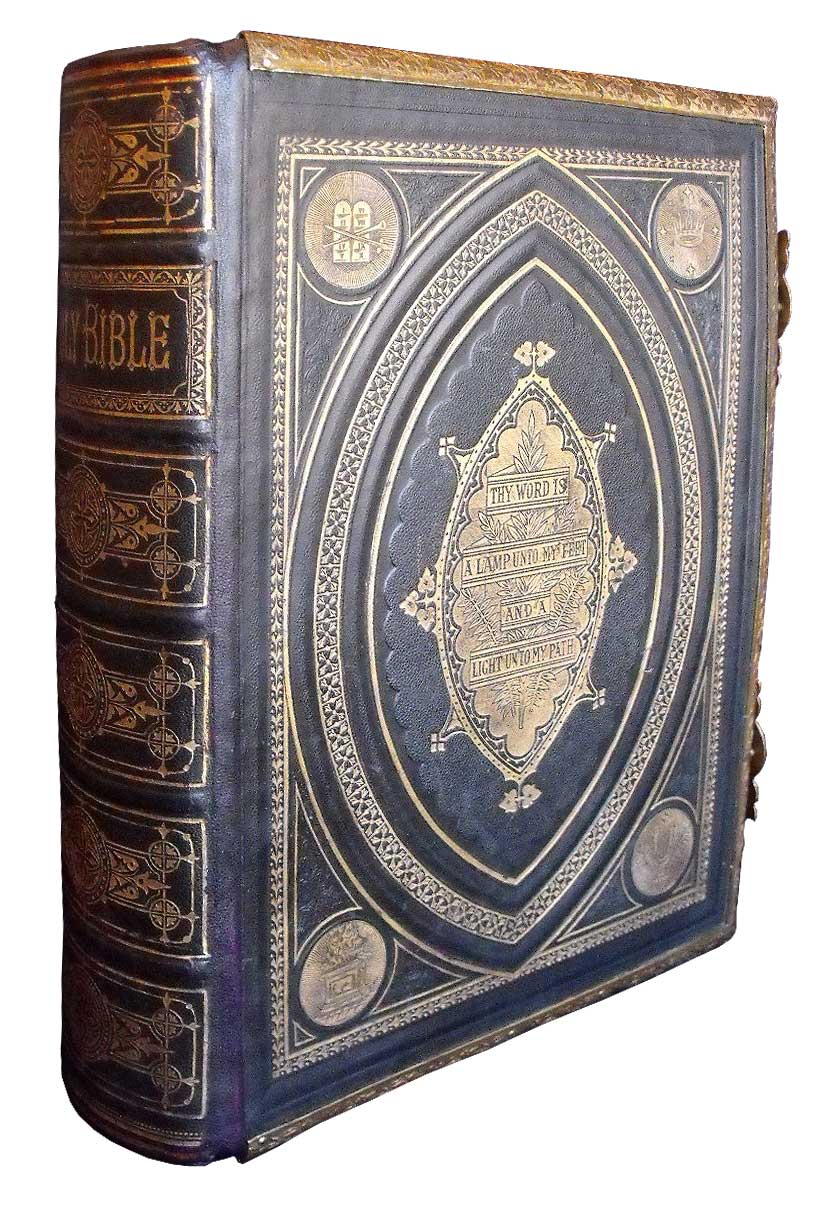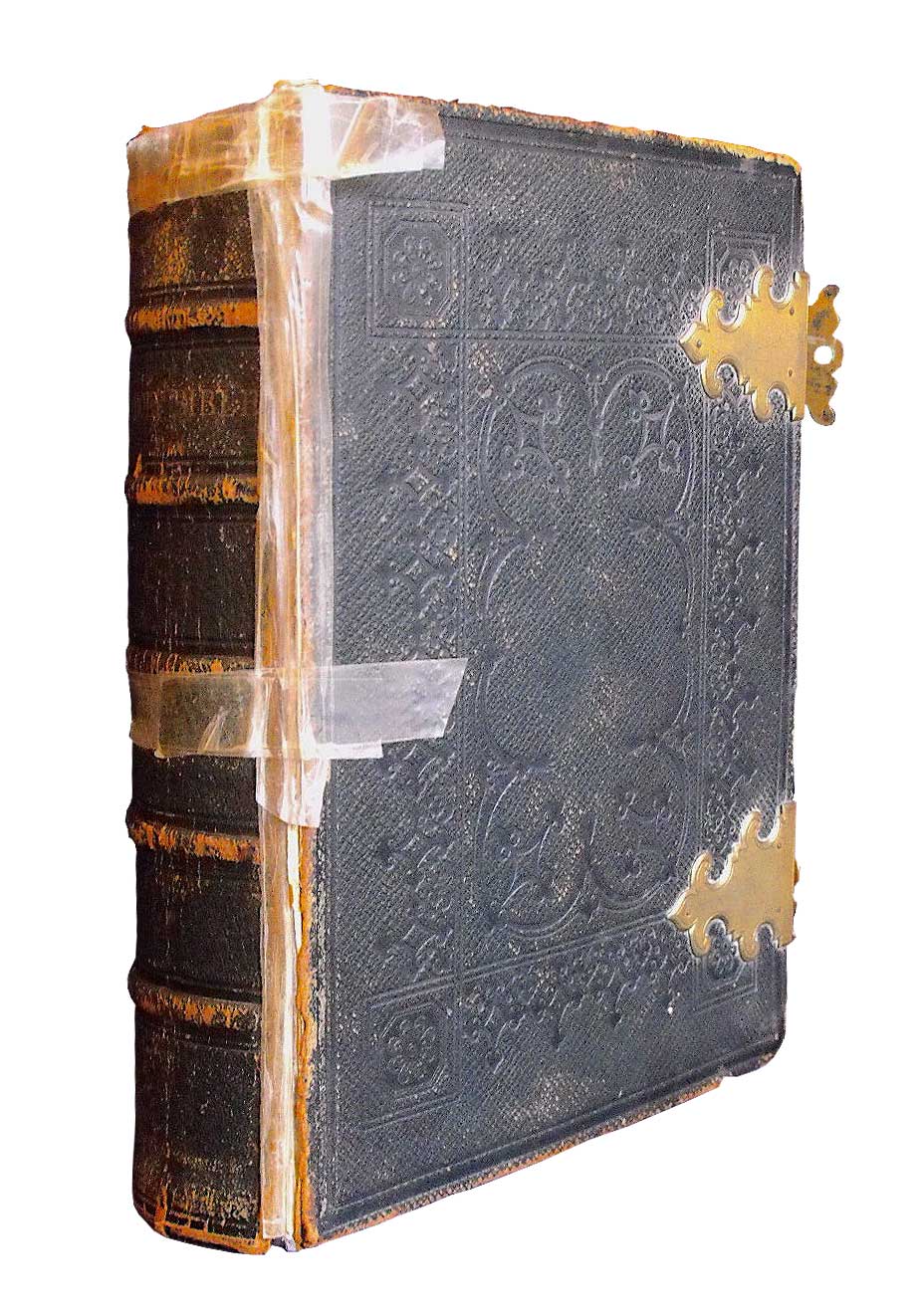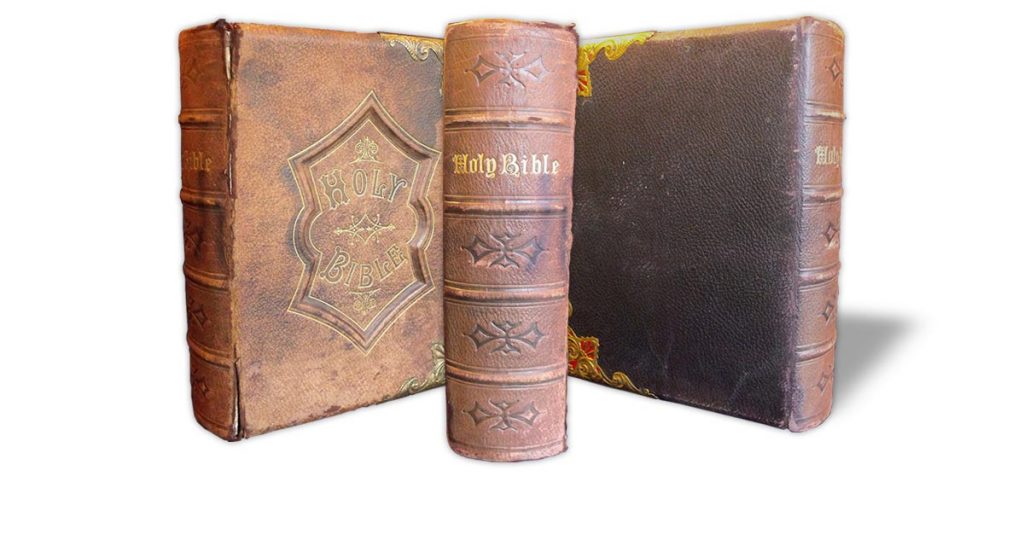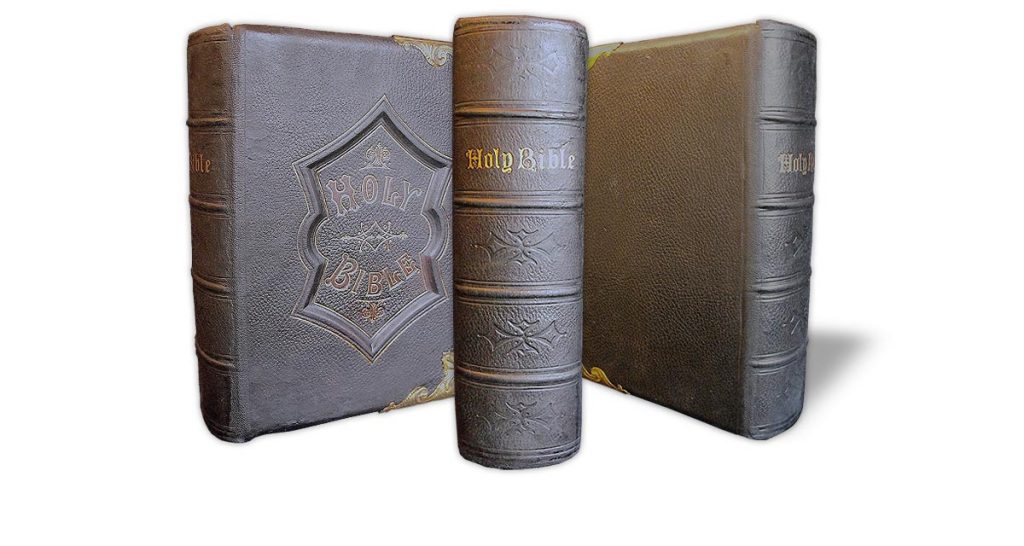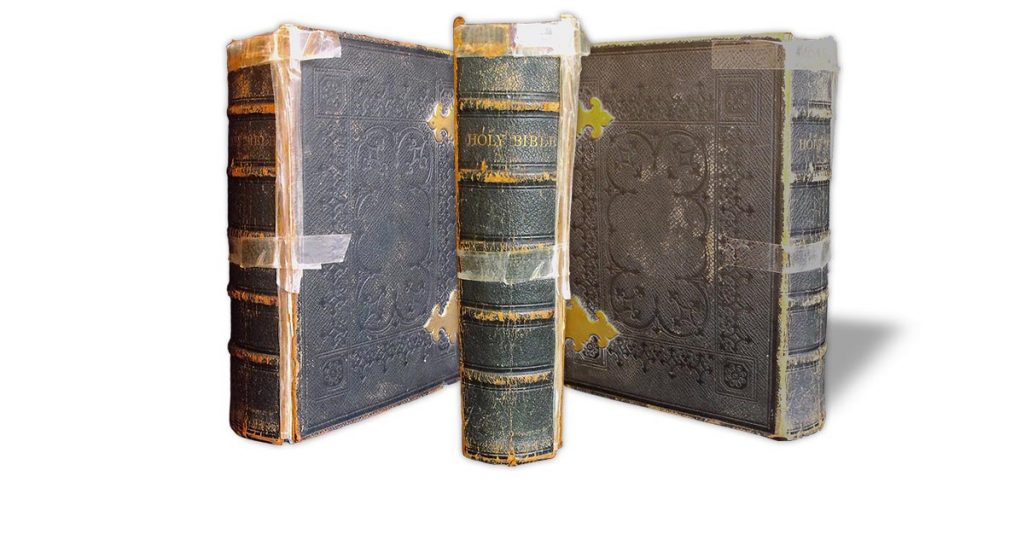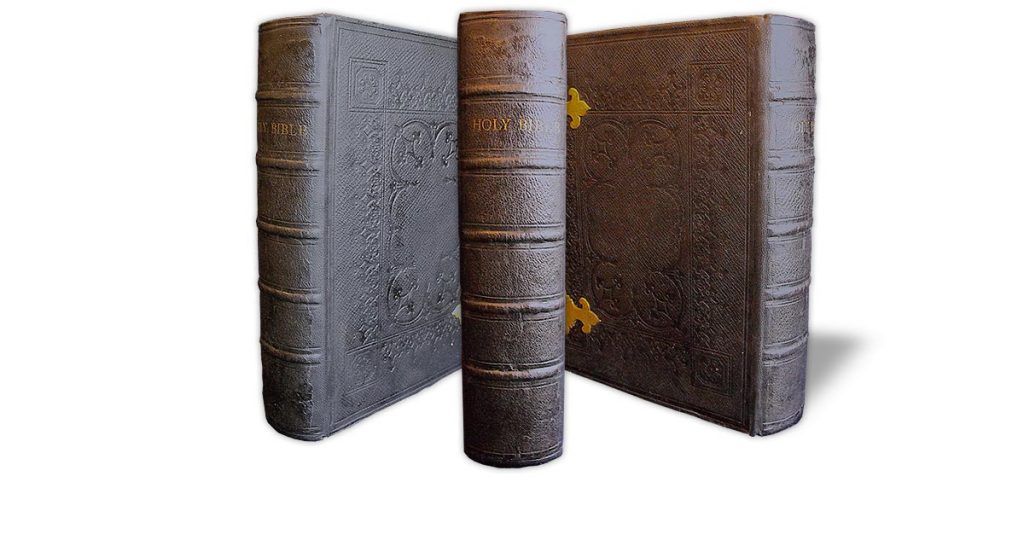Family Bible Repair & Bible Restoration
Background of Family Bibles
Many families in the UK possess a large and grand Bible dating from the Victorian era or earlier. These Bibles were often given as wedding presents to their initial owners. They would have been expensive purchases when new and over time, they were passed down through successive generations.
Many of the Victorian examples included special printed pages for their owners to record family births, deaths and marriages. Other families took to carefully recording this information on the blank endpapers and preliminary leaves of their Bibles.
As a result, these Bibles have become cherished and important archives of family history for their current custodians.
Traditional leather Bible binding styles
Leather family Bibles dating from the 17th and 18th century were individually bound by hand in a robust traditional style.
Their covers were firmly attached with stout cords. Generally, the leather covering was of thick calf skin.
Some were lavishly decorated but in general, they were fairly plain robust leather bindings.
Though some do become damaged over time, many are still in a good state of repair.
Victorian family Bibles
Large Victorian Bibles were primarily produced to look lavish. Today we might describe this as a ‘triumph of style over substance’.
Heavy leather-covered boards were often richly decorated with gold tooling. Sometimes the covers were augmented with pressed brass edges, corners and clasps.
The bookbinders who produced these lavish Bibles probably did so on a production line basis. They were not overly concerned with the book’s long-term durability. Often, their binding methods sewed the seeds of these Bibles’ future disintegration.
The thick and heavy covers were attached to the text block with thin cords. The leather along the hinges was pared thinly on its ‘flesh’ side in pursuit of a neat and dainty finish. Sometimes this combination produced bindings that were not robust.
Common problems with old Bibles
Over time, heavy usage and rough handling can cause damage. Periods spent in the acidic environment of coal-heated houses can degrade the leather covering. Years of storage in the dry environment of centrally heated homes can make the leather brittle.
Usually, a split starts along the front hinge as it is the one that sees the most use. Over time the split extends along the whole length of the front cover. At that point it doesn’t take much for the heavy cover to eventually detach.
In turn, this can leave the spine flapping, attached only by the back hinge. Eventually, the spine detaches too. As time goes on, the back cover may also detach and the text block starts to sustain damage.
At this point, most owners put the component parts of their family Bible away for safe keeping. They avoid handling it again for fear of causing further damage!
Bible repair and Bible restoration
As long as you still have both of your Bible’s covers, it can be completely restored. The restoration process will incorporate all of the remaining original parts. If you have the original leather spine, the task is made much easier.
Torn or creased pages can be repaired.
Detached pages can be re-attached to the text block.
If you only have part of the original spine, it can usually be re-used. Lost areas can be re-tooled to emulate the original design.
If the original spine is missing, the new spine can be tooled to reflect the likely design of the original.
If the endpapers are damaged or missing, I can replace them with paper sympathetic to the original style.
The paper used to make replacement endpapers for 19th century Bibles is supplied in similar shades to the originals. It is produced specifically for this purpose and is marketed as ‘Victorian Bible paper’.
I can repair almost any damage barring a lost cover or missing brass clasp – unfortunately, nobody makes these anymore!
Damaged Bible restoration process
- First, I remove the spine and the text block’s lining.
- I then repair damaged or creased pages and sew detached pages back into the text block.
- The text block is then re-glued, re-shaped and lined.
- The leather along the hinges of the covers is carefully lifted. A new piece of leather is inserted which forms the new spine of the book. The lifted leather is then pasted back down.
- Crucially within this process, I firmly re-attach the covers to the text block. I use a technique that is more robust than that used when the book was originally bound.
- The original spine is then mounted onto the new spine. If required, I replicate missing sections of gold tooling. Alternatively, I tool the new spine in a contemporary style.
- If I can re-use the original endpapers, they are mounted back into the text block. I augment these with a strip of cloth that runs neatly along the length of each inner hinge.
- On Victorian Bibles, I re-colour rubbed areas of the binding (generally to the original black) to create a consistent tone.
- Finally, I apply a preservative leather dressing to the whole binding.
- The repair process puts the Bible back into a condition where it can be handled with confidence, preserving it for future generations.
Click here to see a step by step illustrated demonstration of how I repair Victorian family Bibles.
See more examples of Bible repairs »
Family Bible repair cost
Prices start at £400 for the restoration of a leather bound family Bible of around 30cm to 40cm in height. Smaller Bibles and leather-bound prayer books start at around £200.
The price can vary dependent on the Bible’s size, amount of damage and binding style.
The prices above are based on the Bible still having its original spine and its covers being relatively intact. The endpapers need to be present and in re-usable condition and the pages not in need of any repair.
If the covers have brass edge strips that extend right across their width, these need to be removed before I can repair the binding. They are re-attached once the binding has been repaired. This incurs a small additional charge.
Other processes incur additional charges. These include:
- Repairs to torn or creased pages and re-inserting detached pages.
- Making new endpapers.
- Extensive tooling on the spine due to loss of part or all of the original spine.
Additional processes may increase the repair price to £500-£600. Extensive damage rarely increases the price beyond around £650.



